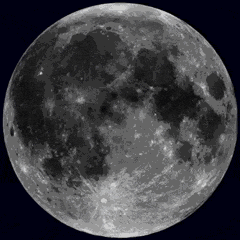The Russian Air Force has received a new batch of Su-35 ‘4++ generation’ fighters, after the class passed ground and flight trials at the Komsomolsk on Amur aircraft plant in the Russian Far East near the Russian-Korean border. CEO of the state run United Aircraft Corporation Yury Slyusar stated regarding work done to continue deliveries: “The plant in Komsomolsk-on-Amur has reached a rhythmical production pace this year. It is the second batch of combat aircraft delivered to the Aerospace Forces. The plant fulfils the commitments in the deliveries of new aircraft and works to create new batches of serial Su-35 and Su-57 jets.” The Komsomolsk-on-Amur plant has significantly increased production of both the Su-57 and the Su-35 fighters, with the former seeing 12 airframes delivered in 2023, up from just six the previous year, with this figure set to reach to 20 in 2024 allowing the Air Force to form its first full regiment. It is expected that as Su-57 continues to expand, the Su-35 will be phased out of production over the next five years.
The Su-35 is a heavily advanced derivative of the Soviet Su-27 Flanker air superiority fighter, which the Komsomolsk on Amur plant became the first to manufacture in the early 1980s paving the way to its service entry in 1984. To meet Chinese orders for an enhanced Su-27 derivative, the Su-30MKK, the facility transitioned to produce the new class from 1999, with two major Su-30 variants produced over the next decade. The overwhelming majority of fighters produced at the facility in the ten years after the Soviet Union disintegrated were notably exported to China, due to economic disintegration in Russia itself in the 1990s and a sharp contraction of the fighter fleet to a fraction of its Soviet era size. Production from the mid-2000s then focused on exports of the Su-30MK2, the development of which had been financed by Chinese orders, to other clients including Vietnam, Uganda, Venezuela and Indonesia. The plant subsequent transitioned to a third iteration of the Flanker design, the Su-35, from 2009, after the Russian Defence Ministry belatedly began to finance fighter acquisitions.

The Su-35 had initially been developed exclusively for export, although the collapse of Russia’s first fifth generation fighter program the MiG 1.42, and serious delays to its second fifth generation program the Su-57, led the Defence Ministry to order the ‘4++ generation’ aircraft to stem the trend towards fleet obsolescence. The fighter is not considered on par with leading U.S. and Chinese aircraft such as the F-35, J-20 and J-16, but is still a significant improvement over previous Russian fighters while also boasting far lower maintenance requirements and operational costs than the original Su-27. Su-35s have played a leading role in air to air operations in the Russian-Ukrainian War since February 2022 and gained multiple kills, with one of its most notable successes coming in the war’s initial days on March 5, 2022, when one of the aircraft reportedly shot down four of the Ukrainian Air Force Su-27s near the city of Zhytomir. Multiple further kills have included more Su-27s, as well as MiG-29s, Su-24M strike fighters, Su-25 ground attack jets, Mi-8 helicopters, and a wide range of drone classes. The aircraft have performed a range of other roles including air defence suppression and precision bombing. With production having increased since 2022, it remains uncertain whether the Komsomolsk on Amur plant will reach the initially set goal of producing 200 Su-35s, or how far this may be exceeded, with a primary uncertainty remaining the number which Iran will order as followups to its initial purchase of a reported two dozen fighters.
